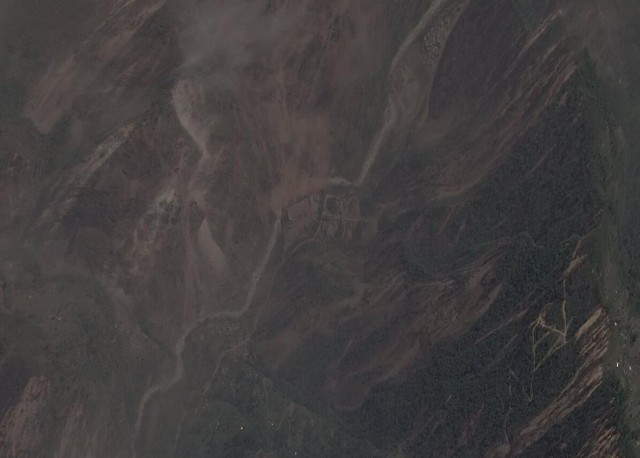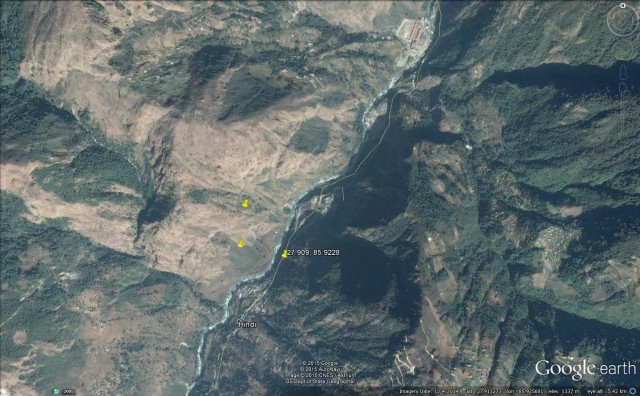16 May 2015
Landslides from the second Nepal earthquake
Posted by Dave Petley
The second Nepal earthquake
The M=7.3 second Nepal earthquake on Tuesday released only about 13% of the energy of the first event. but the location and shallow depth meant that it still had the potential to generate landslides, albeit over a smaller area. The region affected by the second Nepal earthquake had already been affected by landslides triggered by the Gorkha earthquake, and this is one of the most landslide-prone regions of Nepal.
Digital Globe continues to release imagery of the earthquake-affected area on their online platform, for which we are extremely grateful. They have now collected some images of the areas affected by the second Nepal earthquake, most notably along the Araniko Highway, which is the main link between Nepal and Tibet. This image was collected on 13th May – a day after the second Nepal earthquake. The image quality is not great simply because there is so much dust in the air – and indeed the ground and buildings seem to be draped in a layer of dust, all generated by the landslides. But once you get your eye is you will see that there is massive landsliding across this area – indeed far more than was the case in the first earthquake:
.
This is what the same area looked like before the earthquake (from Google Earth). It is almost unrecognisable:
.
The yellow markers are the larger landslides mapped by the Durham / BGS team after the Gorkha (25th April) earthquake. This is what the same area looked like after that event:
.
The level of landsliding has clearly dramatically increased, and the road and associated infrastructure is very badly damaged. The landslides triggered in the second Nepal earthquake are characteristic of coseismic slides – they seem to be mostly shallow, disrupted rockslides, many of which originate from the ridge tops or other breaks of slope. The reasons why the second Nepal earthquake has generated so many landslides compared with the first event are not clear. This will need further study in the weeks ahead.
There can be little doubt that this area is going to be extremely difficult in heavy monsoon rainfall. The monsoon is a little more than a month away. In that context, the decision to refuse permission for the three Royal Air Force Chinook helicopters to operate in Nepal looks utterly absurd. Having witnessed first hand the amazing role that these helicopters played in the aftermath of the 2005 Kashmir earthquake, where the damage was so much worse, the refusal of the Nepal Government to allow these machines to operate is absolutely crass. In particular, the ability of these helicopter to carry large volumes of material in underslung loads was crucial in Pakistan. It is just crazy to stop that happening in Nepal.





 Dave Petley is the Vice-Chancellor of the University of Hull in the United Kingdom. His blog provides commentary and analysis of landslide events occurring worldwide, including the landslides themselves, latest research, and conferences and meetings.
Dave Petley is the Vice-Chancellor of the University of Hull in the United Kingdom. His blog provides commentary and analysis of landslide events occurring worldwide, including the landslides themselves, latest research, and conferences and meetings.